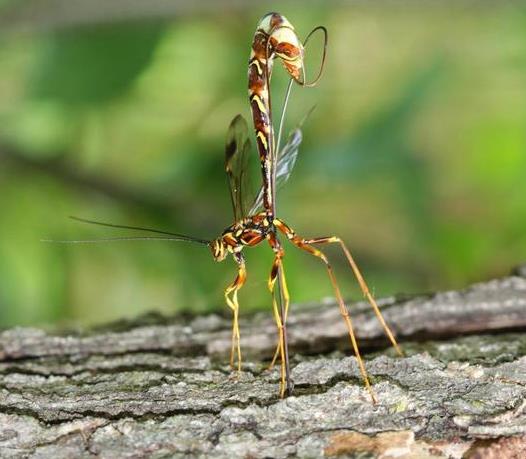The use of certain insects to attack and destroy pests—predominantly other insects—is an intriguing and increasingly popular natural method of biological insect control. In particular, the ichneumon wasp is employed for this purpose to control pest populations of crop-damaging beetles, butterflies, moths, and other hymenopterans (members of the insect order Hymenoptera). The ichneumon wasp is a parasitoid: Its parasitic larvae feed on or inside another insect host species until it dies. (By definition, parasitoids kill their hosts when advancing from the parasitic to the free-living portions of their life cycles, whereas true parasites typically thrive in or on their hosts without directly killing them.) Because many of the hosts of the ichneumon larvae are insect pests of both agricultural and forest crops, ichneumons can be effective biological control agents and provide an economic and environmental benefit to humans. See also: Entomology, economic; Hymenoptera; Insect control, biological; Parasitology

Ichneumons, which belong to the Ichneumonidae family of insects, are slender, medium- to large-sized wasps, comprising more than 60,000 (possibly up to 100,000) species worldwide. The vast majority are stingless and harmless to humans. Females have a permanently extruded ovipositor, a needlelike appendage at the tip of the abdomen that is extremely long in many species. They use this ovipositor to deposit eggs into or onto a host, usually while the immature insect host is a larva or pupa. The eggs then hatch and develop into ichneumon larvae that slowly consume their host. Eventually, they kill the host and emerge as mature parasitoids. See also: Insect physiology; Metamorphosis; Predator-prey interactions
One important aspect of the use of ichneumons as biological control agents is that most of them attack and develop inside only a single species of host. Thus, they can be deployed by humans to suppress pests with pinpoint specificity. Ichneumons have been used effectively to control numerous species, including chinch bugs, boll weevils, codling moths, and a variety of beetles. Many farmers and environmentalists see the use of ichneumons as a more sustainable or preferable means of pest control than alternatives such as spraying insecticides and pesticides or genetically altering crops. See also: Agricultural science (plant); Agricultural soil and crop practices; Agriculture; Insecticide; Pesticide





